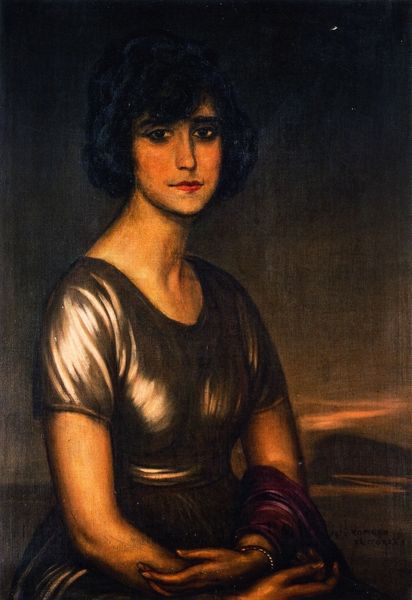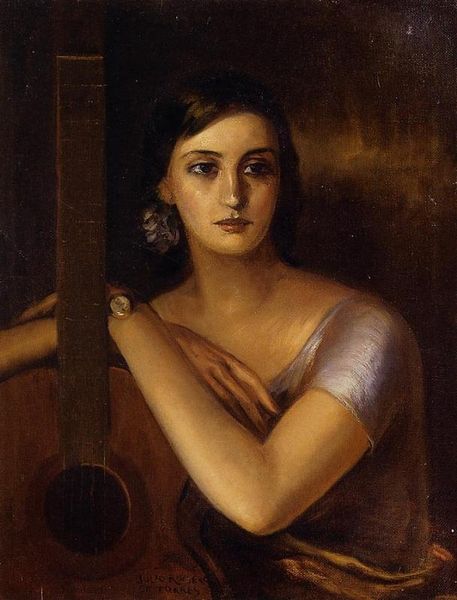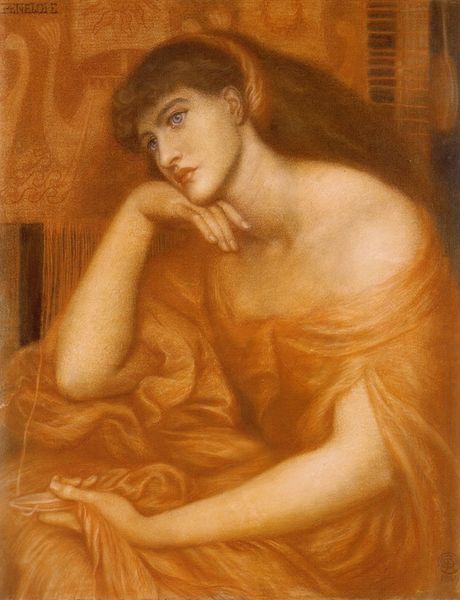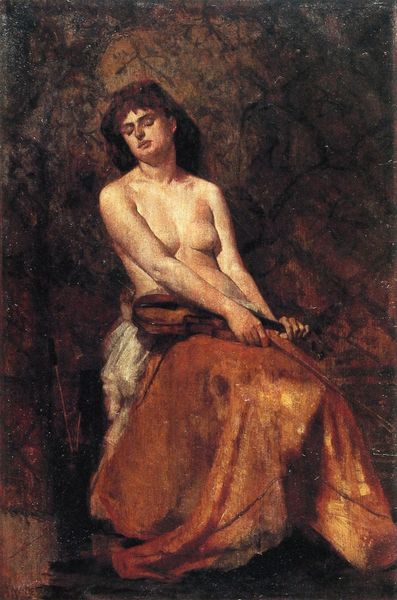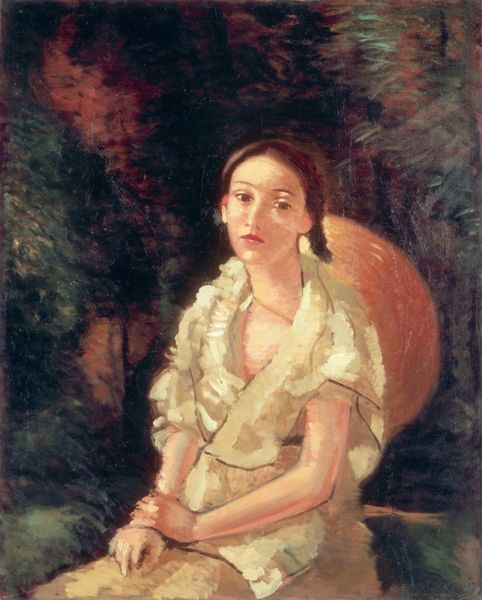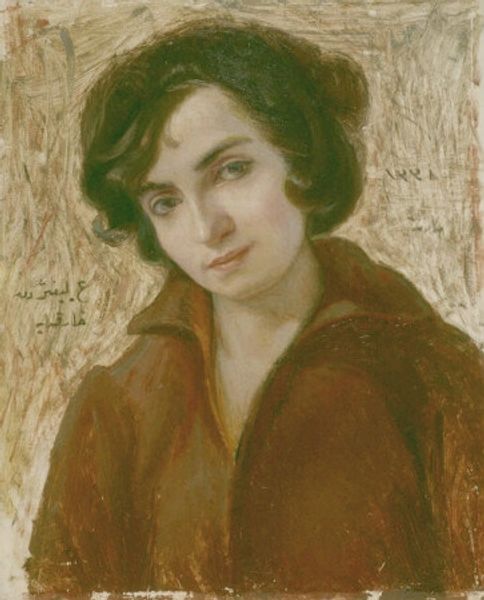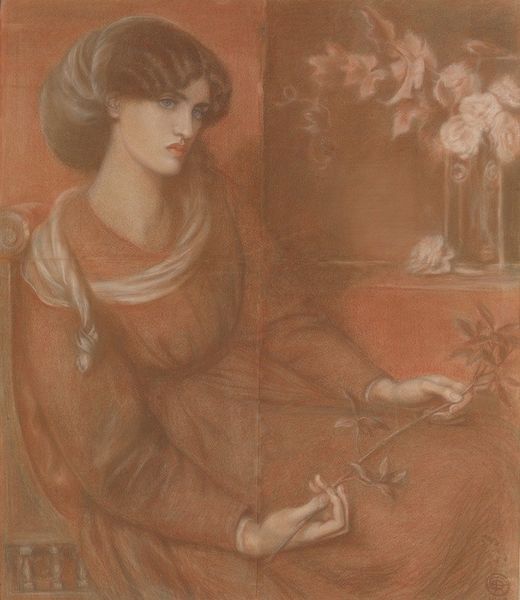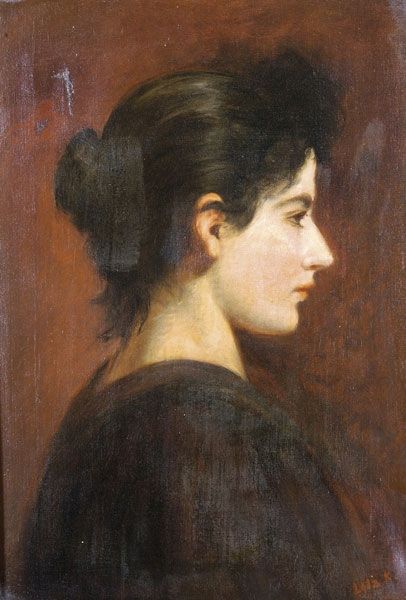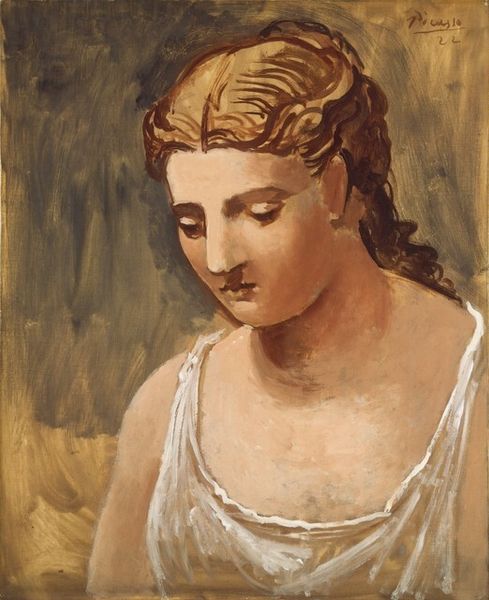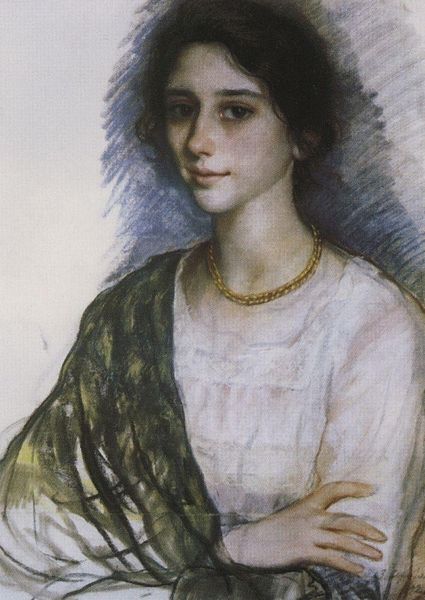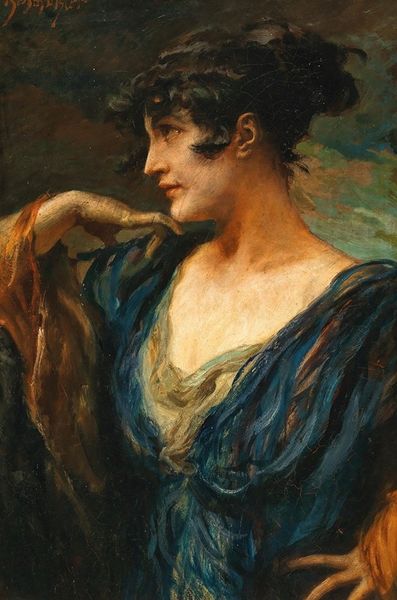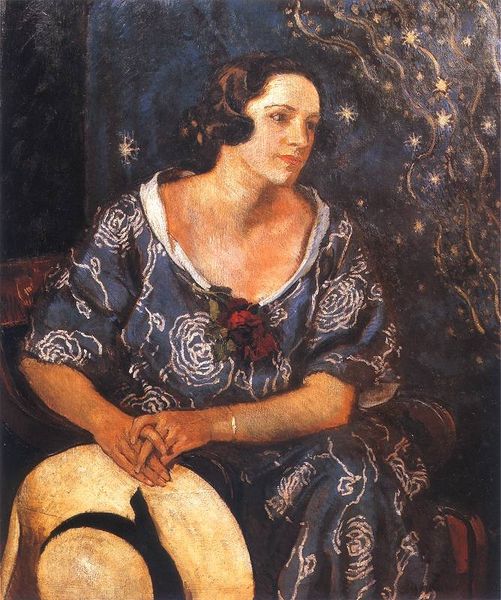
#
portrait
#
portrait reference
#
portrait head and shoulder
#
animal portrait
#
animal drawing portrait
#
portrait drawing
#
facial portrait
#
portrait art
#
fine art portrait
#
digital portrait
Copyright: Public domain
Curator: Here we have what's known as "Tristeza Andaluza." This painting is the work of Julio Romero de Torres, a key figure in Spanish painting. Editor: "Andalusian Sadness," yes, I get that immediately. Her gaze is heavy, melancholic, and the muted tones evoke a sense of quiet despair. Curator: The figure certainly embodies a specific representation of Andalusian womanhood – a very romanticized and perhaps, ultimately, constructed idea deeply rooted in Spanish national identity. Romero de Torres was creating imagery during a time of intense nation-building. Editor: Absolutely. One wonders about the positionality of women in that national project? There is something inherently problematic, one could say, with fixing a culture on the likeness of a woman. Note also her guitar – it positions her in the tradition, perhaps caged inside, too. Curator: It's crucial to remember Romero de Torres was working within a social and artistic landscape shaped by prevailing patriarchal attitudes, of which, women often were framed to uphold the moral compass of the community. This work becomes especially charged given that it was created during the development of fascist cultural politics and social norms. Editor: Indeed. This highlights the crucial need to approach seemingly "classic" depictions critically, peeling back layers of romanticism to uncover what can be more than difficult social implications. Her individual identity almost disappears; she becomes more a symbol of Spanish identity—tragic or otherwise—as projected by a male artist. I find her stillness and downcast eyes especially poignant. It begs the question: How might this image play within discussions surrounding gender identity? Curator: Ultimately, Romero de Torres’ paintings reflect and perpetuate prevailing societal norms, and raise many such critical questions about cultural representation and national narratives in Spain. Editor: Which offers a perfect lesson on why the study of art must go hand-in-hand with discussions around class, identity, and politics, if we're going to truly unpack its purpose.
Comments
No comments
Be the first to comment and join the conversation on the ultimate creative platform.
